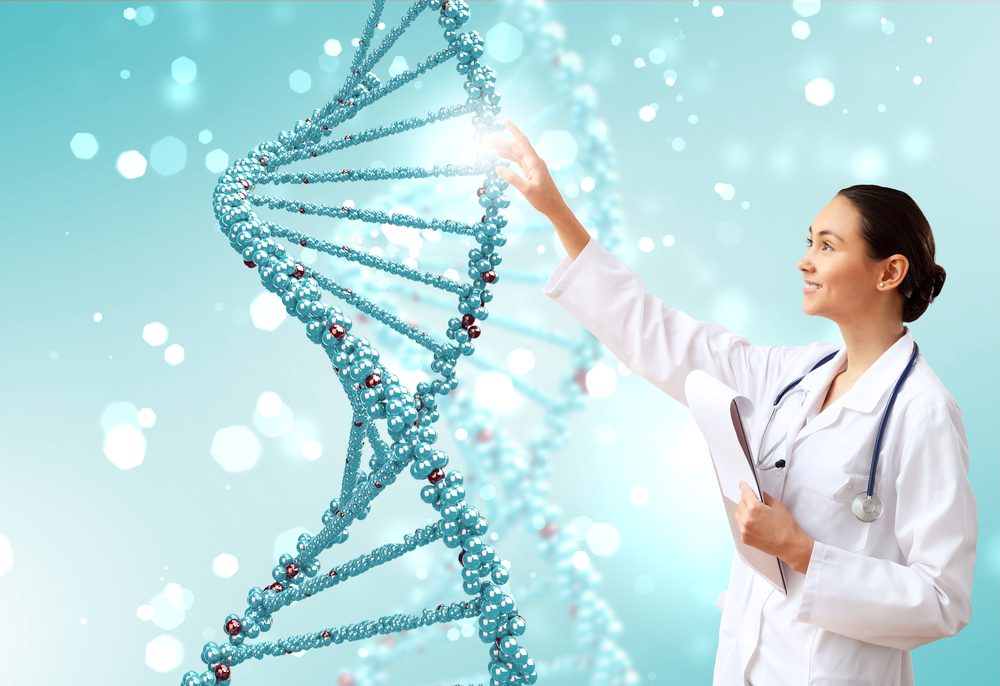Genetically Altering the Hand You Were Dealt

Who doesn’t want to improve the hand they’ve been dealt? The genetics we inherit may increase the odds that we’ll suffer from a given disorder or disease; they may make us more likely to have heart problems at a young age, breast cancer, diabetes, and so on. Until recently, there hasn’t been much we could do about the hand we were dealt. With the advances made in gene therapy, however, we now possess a tool that can alter our genes, changing them in ways that can help us escape a predictable negative health outcome.
Though we still have a way to go before we can change DNA to prevent any disease or fight a given disorder more effectively, we’ve made astonishing progress in this area. Hundreds of clinical trials are being conducted in the gene therapy area, and the FDA has approved a limited number of gene therapy products. For instance, in July 2020, they approved Tecartus, a cell-based gene therapy to treat a type of lymphoma. Additional products have also been approved by the FDA for a variety of conditions.
So, what is gene editing and how does it work?
What is Gene Editing?
The most successful gene-editing process as of this writing involves CRISPR—it stands for Clustered Regularly Interspaced Short Palindromic Repeats. CRISPR technology is a process; CRISPR itself refers to specific DNA strands, and Cas9 (CRISPR-associated) is a protein/enzyme that can cut DNA strands. In layman’s terms, it’s a technology that allows us to edit genomes by changing cellular DNA.
If, for instance, you have a genetically inherited disease or are genetically predisposed to get a disease, CRISPR allows us to alter nucleotides—deleting the gene that causes a disease or deleting the gene and replacing it with edited DNA that will have beneficial effects. Different diseases require different approaches—sometimes deleting is all that is required; other times a different editing/replacement technique is necessary because deleting may eliminate the disease but create problems with other cells.
The size of the gene-editing tool affects editing capabilities. This means that the “delivery vehicle” has to be large enough to accommodate all the necessary editing tasks. Typically, this delivery vehicle is a virus, and it contains gene-editing material. If a gene requires three different deletions and insertions (for certain diseases), it may be impossible for a single virus to contain all this material. Therefore, it may be necessary to do a series of treatments rather than a single one. Or it may be advisable to find smaller editing tools to fit in the virus. Other options exist, but I want to convey that one size doesn’t fit all—gene editing can be a varied process, depending on the disease being treated. The potential of gene editing is staggering. Conceivably, it can be effective in helping people avoid everything from cancer to blood disorders to cystic fibrosis.
Let me share a brief history of gene editing so you can see how much progress has been made in a relatively short period.
History of Gene Editing
Scientists began testing various editing techniques in the ‘70s, manipulating RNA and exploring the frontier of genome editing. Programmable nuclei were early editing tools until CRISPR was discovered as a superior technique—it was far easier to use than previous approaches and much more efficient. Whether done in vivo or in vitro (inside or outside of the body), the goal is to deliver the editing machinery to delete or correct targeted genes. Gene editing studies really ramped up at the start of the 21st century. A great deal of the testing focused on animals and on bacteria; we’ve exercised an abundance of caution, wanting to make sure we do no harm before using gene editing on people.

Still, we’ve made a number of significant advances. Early on, scientists studied how a virus invades bacteria and how the bacteria destroy the virus but hold on to their genetic material, making a record of it in DNA’s CRISPRs—this allows the immune system to deal with the invading virus more effectively the next time it invades the bacteria.
This process provides scientists with insights into how to use viruses and CRISPR technology to impact DNA within cells. Over time, we’ve become much more sophisticated about these uses. Initially, we could only target single-letter DNA mutations such as sickle cell anemia (DNA has four letters, each representing a nucleotide). With experimentation, however, we learned how to address multiple letter mutations such as Tay Sachs disease.
The Great Thing About Genomes
I would be remiss if I didn’t mention a product related to genetic editing, a healthspan tool that’s affordable and worthwhile.
In recent years, we’ve seen several companies offering genetic testing directly to the public. Companies like 23andMe have successfully marketed themselves by promising to analyze DNA and tell people everything from the diseases to which they’re susceptible to their ancestry. While some of these companies may be more reputable than others, mapping one’s genome is a good healthspan decision.
One of the benefits is knowing how people might respond to certain medications. Genome testing can identify an individual’s SNP—single nucleotide polymorphism. An SNP is a DNA variation within a nucleotide, and scientists have been busy identifying them since certain ones can predict how people react to specific drugs as well as susceptibility to diseases. For instance, we know that one SNP diminishes the effectiveness of Losartan, the blood pressure medication.
We also know that individuals with an ACE1 mutation are less susceptible to COVID than others (though it also makes them less responsive to ACE receptor blood pressure medication). We also have done sufficient testing to be aware of which diabetes medications are more or less effective, depending on one’s genome. When people possess a rare SNP, DEC2, they can sleep fewer hours than recommended without suffering any ill effects.
In the future, we won’t have a one-size-fits-all approach to prescribing drugs. We’ll recognize that for a given condition, the preferred medication is only effective for 80% of the population with a specific DNA make-up; that 20% of the population should receive an alternative drug that works best given their genetic composition.
The entire field of genetics is evolving rapidly, and though it’s impossible to predict exactly which diseases it will have the most effect on, we can predict that it will help many of us live longer and better.